Restauro R2
Premixed fast setting thixotropic mortar, uni en 1504-3 pcc type and r2 class, resin-bonded and fibre-reinforced, for reconstruction of concrete.
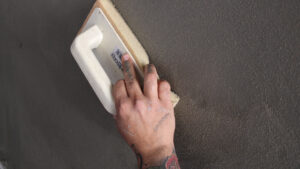


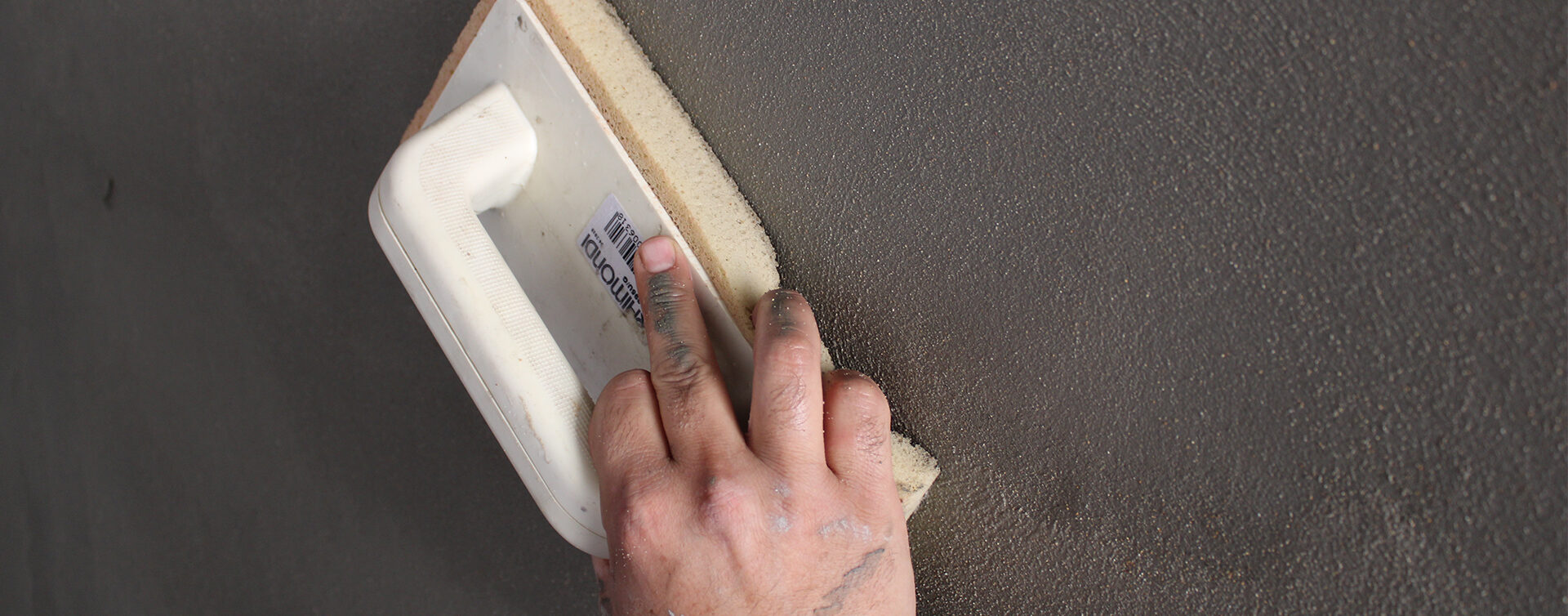
Premixed fast setting thixotropic mortar, uni en 1504-3 pcc type and r2 class, resin-bonded and fibre-reinforced, for reconstruction of concrete.



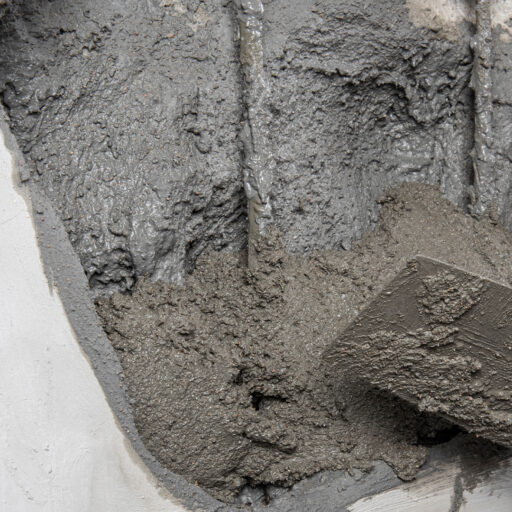
Application areas
Discover more
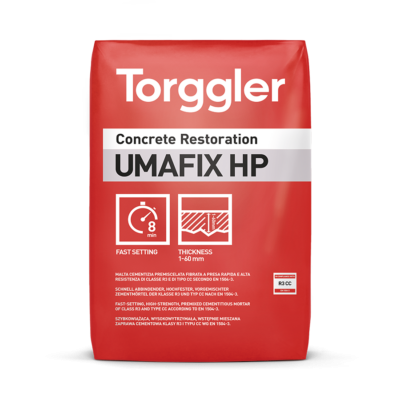
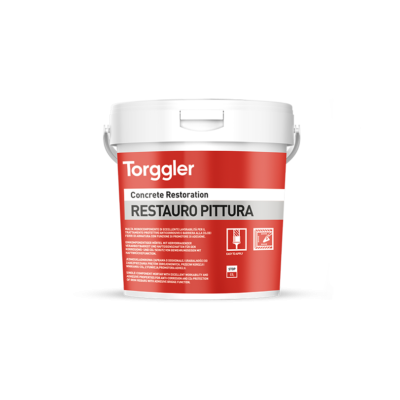
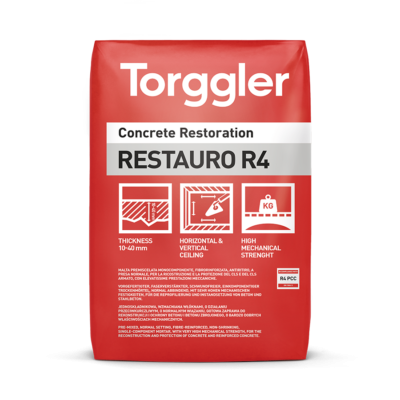
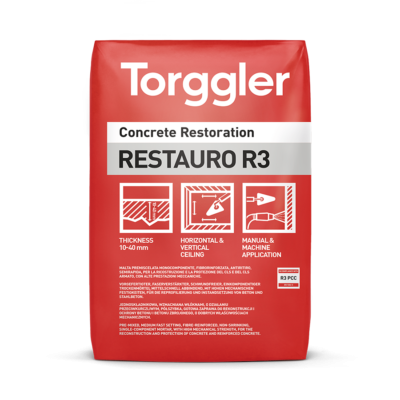
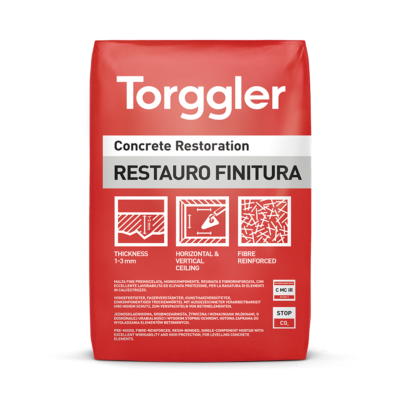
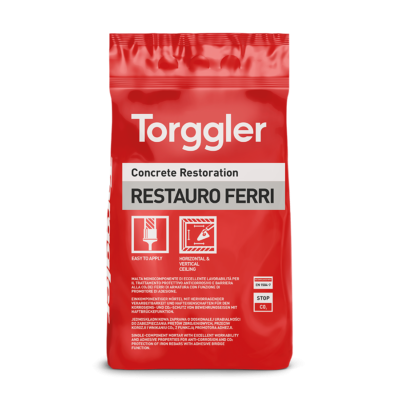
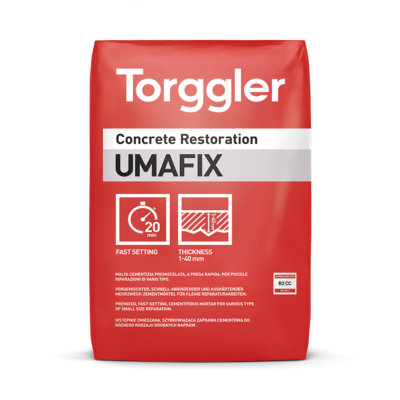
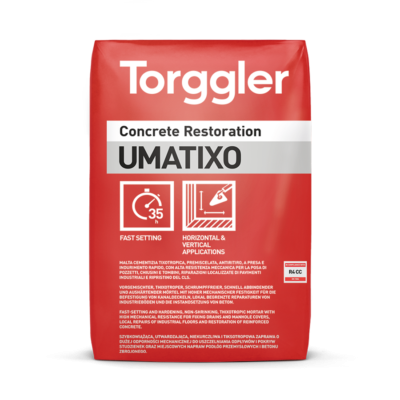
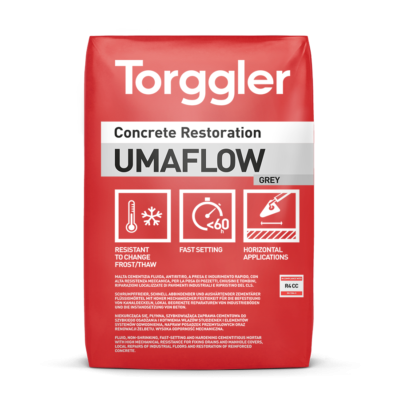
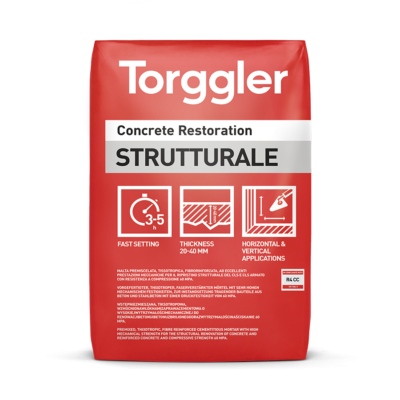
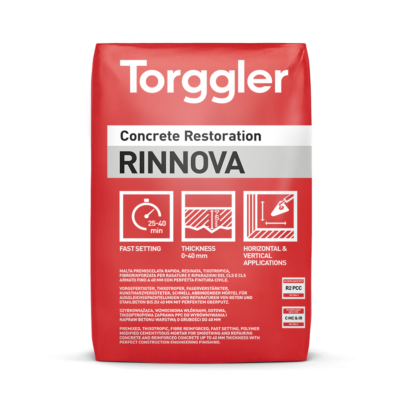
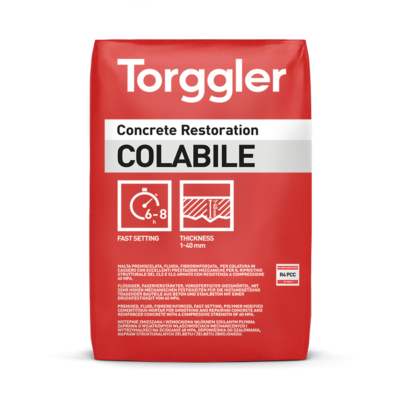
Restauro R2 is a rapid, ready-for-use, fibre-reinforced, grey-coloured mortar which is based on special cements, selected aggregate, synthetic resins and special additives. Its high thixotropic nature makes it possible to use the mortar for vertical or ceiling applications, both manually and sprayed with a pump, without leaving sag marks. A slight expansion both in the plastic stage and in the post-hardening stage makes it possible to compensate for shrinkage with considerable improvement in the final adhesion and at the same time avoiding the formation of cracks. The high level of water retention reduces the danger of “burns” when applying thin coats (which, however, must be no less than 1 cm) and during critical climatic conditions (high temperatures and strong winds). In this case, suitable precautions must be taken (avoid direct exposure to the sun, mix with cold 1/4 water, apply the product in the cooler hours of the day when it is not too sunny, etc.). Restoration R2 and particularly suitable for rebuilding balcony pediments, steps, parapets, and for reconstructing the concrete cover in concrete structures degraded by carbonation phenomena or other types of deterioration, provided that the structures have not suffered structural failure (in this case use Structural). It can also be advantageously used to regularize defects in reinforced concrete castings, such as gravel nests of a certain consistency and incorrect positioning of reinforcing bars resulting in their surfacing, provided that such regularizations have the thickness of at least 1 cm. According to EN 1504-9, the scope of Restoration R2 is referable to Principles 3 (Concrete Restoration) and 7 (Preservation and Restoration of Passivity). Restauro R2 is a UNI EN 1504-3 R2 class PCC type hydraulic mortar designed for the non-structural repair of concrete.
Preparation
The background must be clean and highly keyed. Hammer and scrape to remove any loose, disintegrated or damaged parts, until the resistant and clean background is revealed. Clear the protruding reinforcement bars by completely freeing them from the carbonated concrete and sandblast them until they are bare using a hydro-sandblaster or a normal sandblaster. Wet the background thoroughly and let the excess water evaporate or remove it with a sponge. For effective anti-corrosion protection, apply Restauro Ferri to the reinforcement bars and let it harden so that the subsequent applications do not damage the protective layer.
Mixing the product
Then prepare an Restauro R2 based rendering coat mixed with a 1:2 solution of Neoplast Latex and water to form a fluid and apply it to the background prepared as described above. Mix Restauro R2 with approximately 17 – 19% water (approx. 4.25 – 4.75 litres per 25 kg bag), mixing with a mechanical mixer (low RPM drill with mixer blade or mortar mixer) until the mix is even and without lumps. When using small amounts of mix, a trowel can also be used. However, in this case, the amount of water required may be higher. Moreover, this will lead to a decrease in the mechanical and qualitative results (increase in shrinkage and danger of cracking). The mix prepared in this way has a pot-life of approximately 30 minutes under normal conditions (+20 °C). If the temperatures are higher, the pot-life is reduced.
Application
Apply the Restauro R2 mix by hand to the set but not completely hardened rendering coat using a trowel or straight-edge, or by spraying with a plaster gun (due to the rapid setting time, it is necessary to clean the tubes and the nozzle of the gun every time there is a pause in work – this prevents clogging, which is difficult to clear). As a finish, we recommend Restauro Finitura or Monorasante.
Cleaning
The tools used for laying can be cleaned with water before the mortar hardens; afterwards cleaning can be carried out only by mechanical removal.
Restauro R2 must be stored in a dry, cool and protected area. If closed in the original bags, it can be stored for at least 9 months.
| Color | Code | Packaging | Packaging size | Pallet | Barcode |
|---|---|---|---|---|---|
| Grey | 6312 | bag | 25kg |
50 bags
|
| Consistency | Powder |
| Bulk density (MIT 13*) | 1,400 kg/m3 |
| Granulometry(EN 12192-1) | 0-3 mm |
| Water soluble chlorides (EN 15015-17) (EN 1504-3 requirement ≤ 0.05% by mass) | < 0,05% |
| Mixing water | 17-19% |
| Mix consistency | thixotropic |
| Density of fresh mix (EN 1015-6) | 2.050 kg/m3 |
| Mix pot life (EN 13395) | approx. 30 min. |
| Setting time: start( (EN 196-3) | approx. 40 min. |
| Setting time: finish (EN 196-3) | approx. 100 min. |
| Application temperature | from +5 °C to +30 °C |
| Consumption per m3 of mortar | approx. 1.800 kg |
| Operating temperature | from -20 °C to +90 °C |
| Density of hardened mortar (EN 12190) | 2.030 kg/m3 |
| Flexing strength at 28 days (EN 12190) | 8 MPa |
| Compressive strength at 28 days (EN 12190) (requirement EN 1504-3 ≥ 15 MPa) | ≥ 35 MPa |
| Compression modulus of elasticity (MIT 90*) | 15,0 GPa |
| Capillary absorption coefficient (EN 13057) (requirement EN 1504-3 ≤ 0.5 kg/(m -h )) | 0,46 kg/(m2•h0,5) |
| Adhesion bonding (EN 1542) (EN 1504-3 requirement ≥ 0.8 MPa) | 1,5 MPa |
| Impeded shrinkage/expansion (EN 12617-4) (requirement EN 1504-3 Bond strength after test: ≥ 0.8 MPa) | 1,5 MPa |
| Thermal compatibility (freezing-thawing cycles) (EN 13687-4) (requirement EN 1504-3 Bond strength after cycles: ≥ 0.8 MPa) | > 1,5 N/mm2 |
| Reaction to fire (EN 13501-1) (requirement EN 1504-3 value declared by the manufacturer) | Class A1 |
| Product classification (EN 1504-3) | R2 PCC |
1 MPa is equal to 1 N/mm2
(*) Torggler internal methods (MIT) are available on request.
Use approximately 19 kg/m2 per cm of thickness.
Contact our team for personalized support and product guidance.